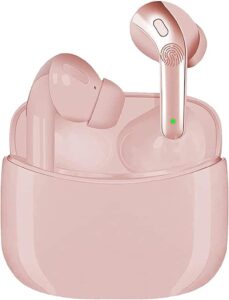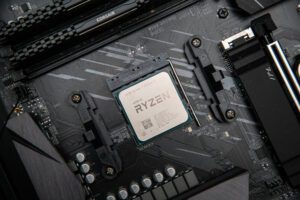In today’s fast-paced digital world, a slow laptop can be incredibly frustrating and hinder productivity. Whether you’re a student, a professional, or simply using your laptop for personal tasks, a sluggish device can disrupt your workflow and cause unnecessary delays. However, there’s good news! With a little understanding and a few simple steps, you can speed up your slow laptop and enjoy a smoother computing experience.
In this blog post, we’ll delve into the common causes behind a slow laptop and provide you with practical solutions to boost its speed. From overloaded startup programs to fragmented hard drives, we’ll explore the factors that can contribute to sluggish performance. You’ll also learn how to optimize your laptop’s performance through disk cleanup, software updates, hardware upgrades, and regular maintenance.
By the end of this article, you’ll have a clear understanding of why your laptop is slow and a toolbox of actionable tips to revitalize its speed. Say goodbye to frustrating delays and hello to a fast and efficient laptop that helps you accomplish tasks with ease. Let’s dive in and uncover the secrets to transforming your slow laptop into a speed demon!
Understanding the Causes of a Slow Laptop
Overloaded Startup Programs
Having too many programs launching at startup can significantly impact your laptop’s speed. Each additional program consumes system resources and prolongs the boot-up process. To tackle this issue:
Identify startup programs: Use Task Manager (Ctrl+Shift+Esc) or a third-party startup manager to determine which programs are set to launch at startup.
Disable unnecessary startup programs: Disable programs that you don’t need to start automatically by right-clicking on them and selecting “Disable” or using the respective settings within the startup manager.
Insufficient Storage Space
Running low on storage can slow down your laptop’s performance as it struggles to allocate space for temporary files, software updates, and other system processes. To address this problem:
Free up disk space: Delete unnecessary files, such as old documents, unused applications, and temporary files. Utilize the Disk Cleanup tool (search for it in the Start menu) to remove unnecessary files automatically.
Consider external storage options: If you frequently deal with large files or have limited internal storage, investing in an external hard drive or utilizing cloud storage services can help alleviate the strain on your laptop’s storage.
Outdated or Incompatible Software
Using outdated software or running incompatible versions can lead to performance issues on your laptop. Stay on top of software updates:
Update operating system: Ensure your laptop’s operating system is up to date by enabling automatic updates or manually checking for updates in the settings.
Update software applications: Regularly update all installed software applications to benefit from bug fixes, performance improvements, and compatibility enhancements. Most software includes an update option within their settings or a dedicated update checker.
Malware and Viruses
Malware and viruses can infiltrate your laptop, causing it to slow down, freeze, or behave erratically. Protect your laptop from malicious threats:
Install reputable antivirus software: Choose a reliable antivirus program and install it on your laptop. Ensure it provides real-time protection, scheduled scans, and frequent definition updates.
Perform regular scans: Schedule regular antivirus scans to detect and remove any malware or viruses that may be affecting your laptop’s performance. Quarantine or delete any identified threats.
Fragmented Hard Drive
Over time, your laptop’s hard drive can become fragmented, meaning files are scattered across different physical locations. This fragmentation can lead to slower read and write speeds. To defragment your hard drive:
Use the built-in defragmentation tool: Windows has a built-in tool called “Defragment and Optimize Drives” that you can access by searching for it in the Start menu. Run the tool and analyze your hard drive for fragmentation, then perform the defragmentation process if needed.
By understanding these common causes of a slow laptop, you’re already on the path to identifying and resolving the issues. In the next section, we’ll explore practical steps to speed up your laptop and optimize its performance.
Steps to Speed Up a Slow Laptop
Perform Disk Cleanup
One of the simplest ways to free up space and improve performance is by running a disk cleanup:
Open the Disk Cleanup tool: Search for “Disk Cleanup” in the Start menu and launch the application.
Select the drive to clean: Choose the drive where your operating system is installed (usually the C: drive).
Analyze and select file categories: The tool will analyze your drive and present a list of file categories to clean. Select the categories you want to remove, such as temporary files, system files, and recycle bin.
Start the cleanup process: Click on “OK” or “Delete Files” to initiate the cleanup process. Be aware that the process may take some time depending on the amount of data to be deleted.
Uninstall Unnecessary Programs
Removing unused programs can free up disk space and reduce background processes that consume system resources:
Open the Control Panel: Search for “Control Panel” in the Start menu and open it.
Go to “Programs” or “Programs and Features”: Depending on your Control Panel view, you’ll find the option to uninstall programs under one of these sections.
Select the program to uninstall: Scroll through the list of installed programs and select the ones you no longer need.
Uninstall the selected programs: Click on “Uninstall” or “Remove” and follow the on-screen instructions to complete the uninstallation process.
Upgrade Hardware Components
If your laptop’s hardware is outdated or insufficient, upgrading certain components can provide a significant performance boost:
Assess your laptop’s specifications: Check the specifications of your laptop, including RAM, hard drive, and processor.
Determine upgrade options: Identify the hardware components that can be upgraded. Common upgrades include increasing RAM capacity, replacing a traditional hard drive with a solid-state drive (SSD), or upgrading the processor if feasible.
Research compatibility and installation: Ensure the selected hardware upgrades are compatible with your laptop’s model. Consult the manufacturer’s documentation or seek professional assistance if necessary. Follow proper installation procedures or consider professional installation if you’re unsure.
Disable Visual Effects
Adjusting visual effects can reduce the strain on your laptop’s resources and enhance overall performance:
Open the System Properties settings: Right-click on “This PC” or “My Computer” and select “Properties.” Then click on “Advanced system settings” to access the System Properties window.
Adjust visual effects settings: In the System Properties window, click on the “Settings” button under the “Performance” section. Choose the option to adjust for best performance or manually customize which visual effects to disable.
Apply the changes: Click on “Apply” and “OK” to save the changes and optimize your laptop’s visual effects for performance.
Regular Maintenance and Cleaning
Regular maintenance and cleaning can prevent performance issues and keep your laptop running smoothly:
Keep your laptop physically clean: Use compressed air to remove dust from the keyboard, vents, and fan openings. Wipe the screen and surfaces with a soft cloth.
Update software regularly: Enable automatic updates for your operating system and installed software applications. This ensures you have the latest security patches, bug fixes, and performance improvements.
Scan for malware and viruses: Run regular scans with your installed antivirus software to detect and eliminate any threats that may impact your laptop’s performance.
Manage background processes: Monitor and manage the processes running in the background. Close unnecessary applications and disable startup programs to reduce the strain on system resources.
By following these steps and implementing the suggested optimizations, you can significantly improve your laptop’s speed and performance.
Conclusion
A slow laptop can be frustrating and impact your productivity. However, with some simple steps, you can optimize your laptop’s performance and enjoy a faster and more efficient computing experience.
In this article, we explored the causes of a slow laptop and provided practical tips to speed it up. From performing disk cleanup to upgrading hardware components, disabling visual effects, and regular maintenance and cleaning, there are several ways to enhance your laptop’s performance.
By implementing these optimizations, you can make the most of your laptop’s capabilities and extend its lifespan. So, don’t let a slow laptop hold you back. Follow these tips and enjoy a faster, more responsive, and enjoyable computing experience.



